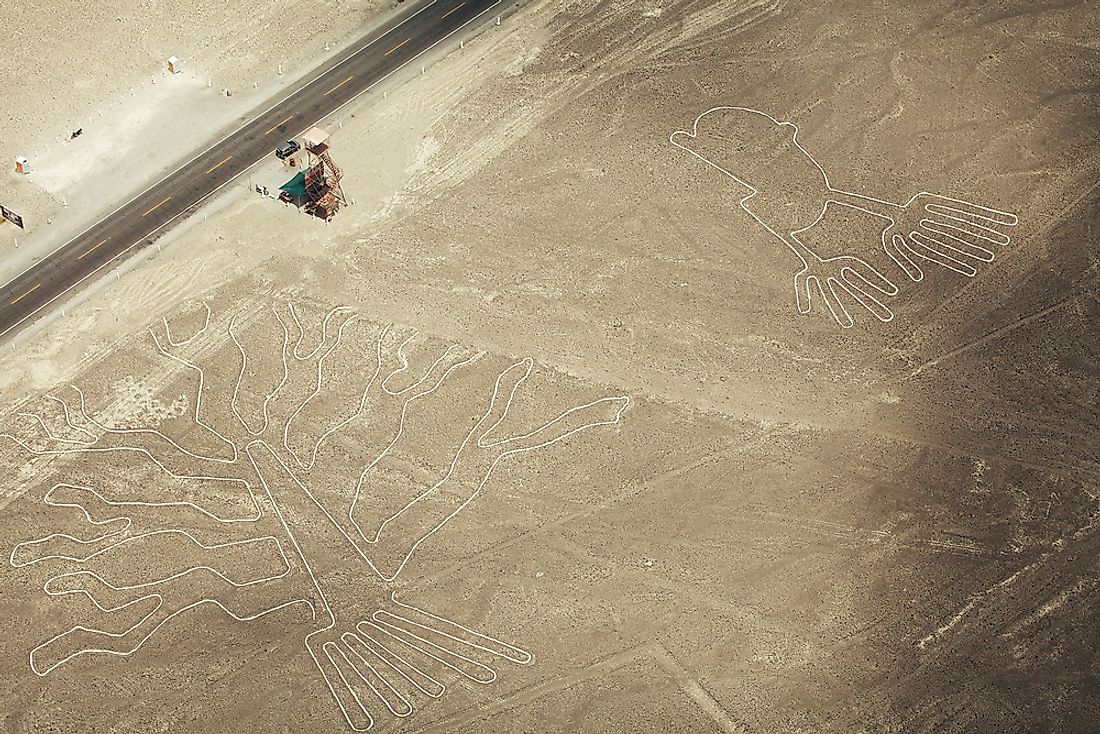What Is Unique About The Nazca Lines In Peru?

The Nazca lines are a sequence of prehistoric geoglyphs or shapes drawn in the Nazca desert which is located to the south of Peru. Some of the illustrations are as big as 1,000 feet long. The Nazca desert itself is more than 50 miles in length ranging from the towns of Nazca to Palpa. Researchers and scientists agree that the Nazca culture was the culture responsible for drawing the geoglyphs between 500 BCE and 500 CE.
Formation of the Nazca Lines
The geoglyphs form several shapes. Some of the glyphs depict images of animals such as birds, llamas, monkeys, human shapes, fish, or jaguars. Some images are simple geometric shapes and lines while others depict more intricate symbols like trees and flowers. The shapes were drawn by first getting rid of the reddish gravel on top in order to expose the ground beneath. While the exact purpose of the shapes is unknown, most scholars agree that they carry a certain religious significance.
Habitat
Nazca is a desert. As such, there is very little rainfall received annually with high temperatures and relatively little vegetation. The month of March does not see any rainfall while the most rainfall, averaging 2 mm, is received in January. February is the warmest month with temperatures averaging 24.5° Celsius. July is the coldest with average temperatures of 16.6° Celsius.
Uniqueness
There are several ways that the archaeological wonders are unique. The shapes have been able to survive for at least 2,000 years. The survival is mainly due to the isolation from human populations and a low wind region. Up to this day, no one knows the significance or meaning of the lines.
The lines can be only observed fully from a few hundred feet in the air because of their massive sizes. Due to this, researchers have not been able to determine how the ancient culture drew them considering that there were no airplanes. Some theories have been made that they had air balloons or they simply used geometry to accurately draw the shapes. However, recent studies show that the shapes can be clearly observed, in full, by someone standing on high mountains.
Tourism to the Site
The lines are a great puzzle and so have been of huge interest to an enthusiast in the field. Their mystery led to the lines being classified as a UNESCO World Heritage Site in the year 1994. Each year, thousands of tourists visit the lines.
Threats to the Nazca Lines
Recently, as of 2012, several reports began emerging that the lines had began to deteriorate. The deterioration was brought about by human encroachment. Indeed, human beings are the greatest threat to these wonders that are still a mystery. More and more landless people are beginning to encroach upon the land and establishing settlements in the area. These people have further decreased what little vegetation cover was there.
In 2014, Greenpeace activists damaged the lines after leaving footprints in the area. More recently, in Janury 2018, a truck driver ignored traffic sins and plowed into the lines destroying them even more. Tourism has also contributed to the destruction of the lines. The thousands of people visiting the site litter the area and inappropriate infrastructure for observing the lines.











